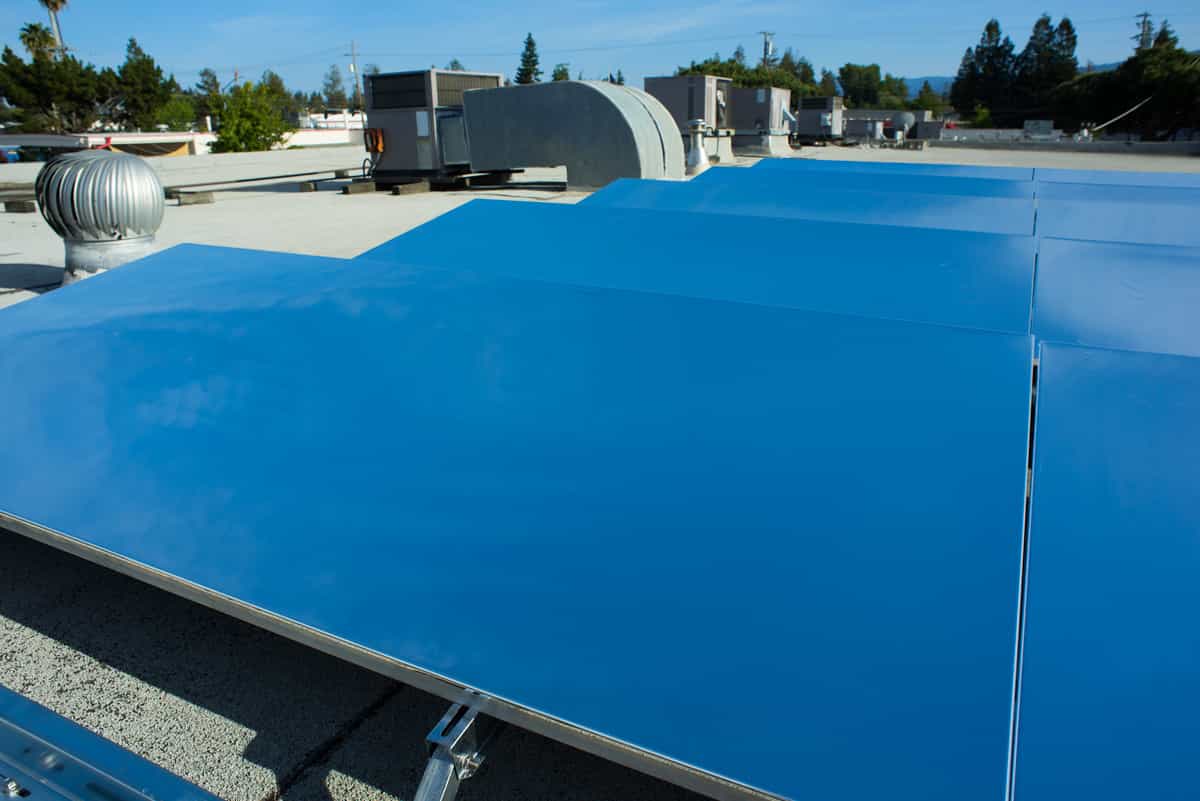
🧊 A loophole in the greenhouse effect paves way for a cool invention
UCLA scientists are testing a thin film designed with nanotechnologies, which can reflect sunlight and reject heat into space. This can be used to employ radiative sky cooling with air conditioning and refrigeration systems.
Share this story!
As global warming increases more and more due to the greenhouse effect, one particular technology remained almost unchanged for years, whose use is constantly growing because of climate change. This is air conditioning and refrigeration systems. Cooling systems are estimated to be responsible for about seven percent of global emissions, and their use is constantly increasing in developing countries.
UCLA researchers, led by scientist Aaswath Raman, are experimenting with a disruptive invention to reduce the impact of cooling systems without using electricity or other fuels. The idea is simple and elegant: special black panels that reflect sunlight emit heat into space during the day, cooling the surrounding environment. So, using the cold sky as a new renewable resource for cooling.
It sounds incredible, but it's physics.
Using a law applied since ancient times
The principle is Radiative Cooling; a law applied since ancient times. In the arid Middle Eastern regions, it was used to freeze water placed in jars during the night, without the air temperature dropping below the freezing point. This was possible during clear and dry nights in the desert, when all the heat could be emitted beyond the atmosphere without any hurdle.
The application of this principle in refrigeration systems faced various problems. An efficient use seemed impossible because the effect was noticeable only in the nighttime. The growing greenhouse effect, increasingly reflecting the thermal radiation towards the Earth's surface, makes the goal even more difficult.

A loophole in the greenhouse effect
First, a loophole was identified in the greenhouse effect: the greenhouse gas layer can reflect only specific infrared wavelengths, but not a narrow window between 8 and 13 micrometers.
Thanks to in-depth technological knowledge in nanotechnologies, the UCLA team created a thin film composed of seven micro-layers of materials suitably designed at the molecular level. The unique optical properties obtained allow it to interfere with the incident radiation, rejecting it towards the cold sky in the wavelength between 8 and 13 micrometers. As a result, even during the day, 97 percent of the incoming heat can be emitted into space, cooling surrounding objects up to 10°C.
Easily integrated
This technology can be easily integrated into existing cooling plants. Black panels built with this 7-layer film, connected via pipes to existing refrigeration systems, can provide cooled water with zero electricity input.
SkyCool Systems was founded to experiment with this technology in different fields: data center cooling, grocery outlet, and convenience store refrigeration.
For example, a battery of glossy black panels is installed on the roof of a grocery store in Stockton, California. Even in summer and in full sun, they are strangely cold to the touch. And the store is saving 15 percent on electricity bills for cooling dairy, deli, freezer, and warehouse spaces.
Ongoing research aims to solve the last problem: making this technology cheap and easily replicable. To make it easily usable in developing countries, especially in the tropical area where the demand for cooling systems is growing fastest.
By becoming a premium supporter, you help in the creation and sharing of fact-based optimistic news all over the world.


